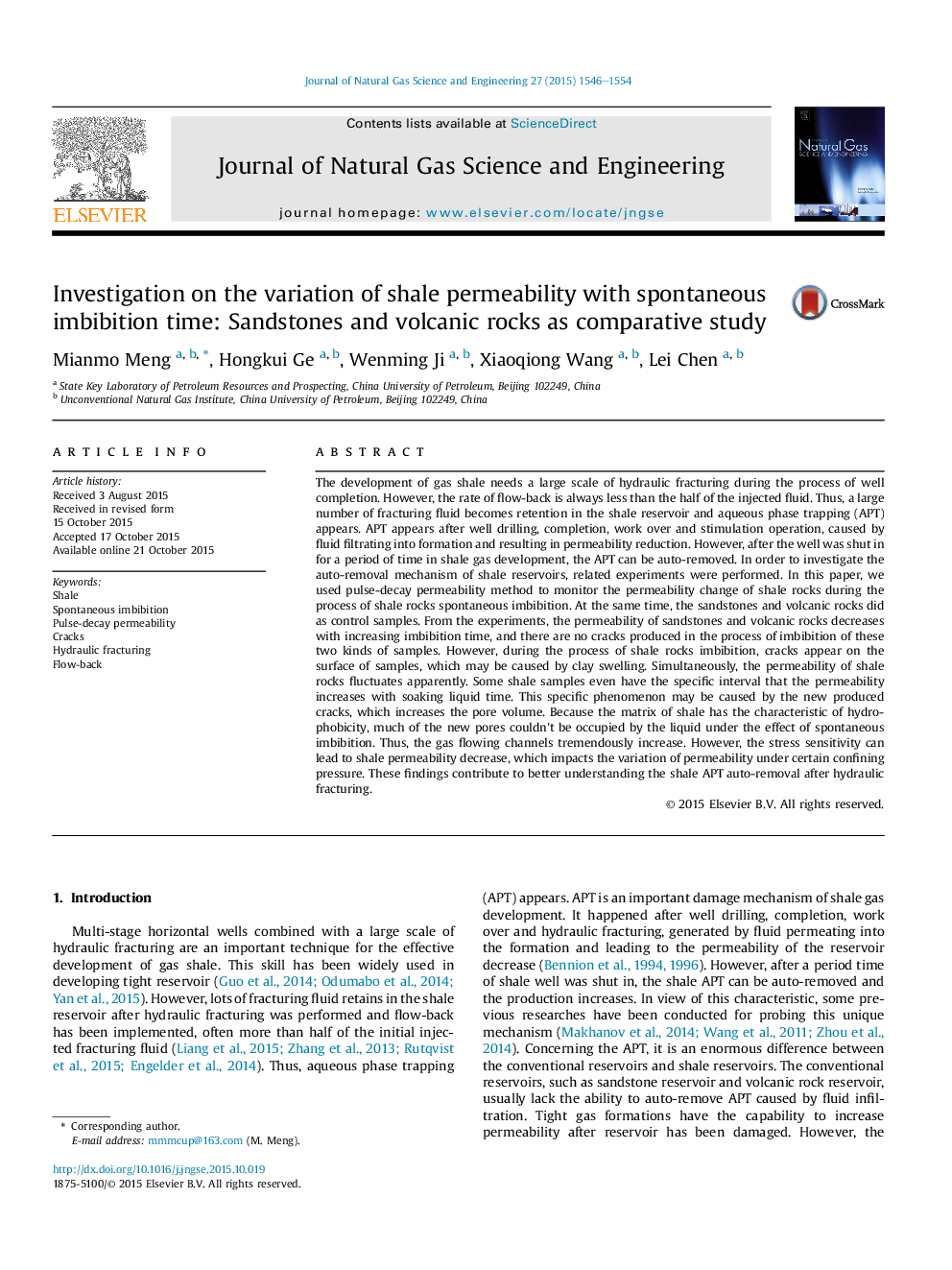| Article ID | Journal | Published Year | Pages | File Type |
|---|---|---|---|---|
| 10690344 | Journal of Natural Gas Science and Engineering | 2015 | 9 Pages |
Abstract
The development of gas shale needs a large scale of hydraulic fracturing during the process of well completion. However, the rate of flow-back is always less than the half of the injected fluid. Thus, a large number of fracturing fluid becomes retention in the shale reservoir and aqueous phase trapping (APT) appears. APT appears after well drilling, completion, work over and stimulation operation, caused by fluid filtrating into formation and resulting in permeability reduction. However, after the well was shut in for a period of time in shale gas development, the APT can be auto-removed. In order to investigate the auto-removal mechanism of shale reservoirs, related experiments were performed. In this paper, we used pulse-decay permeability method to monitor the permeability change of shale rocks during the process of shale rocks spontaneous imbibition. At the same time, the sandstones and volcanic rocks did as control samples. From the experiments, the permeability of sandstones and volcanic rocks decreases with increasing imbibition time, and there are no cracks produced in the process of imbibition of these two kinds of samples. However, during the process of shale rocks imbibition, cracks appear on the surface of samples, which may be caused by clay swelling. Simultaneously, the permeability of shale rocks fluctuates apparently. Some shale samples even have the specific interval that the permeability increases with soaking liquid time. This specific phenomenon may be caused by the new produced cracks, which increases the pore volume. Because the matrix of shale has the characteristic of hydrophobicity, much of the new pores couldn't be occupied by the liquid under the effect of spontaneous imbibition. Thus, the gas flowing channels tremendously increase. However, the stress sensitivity can lead to shale permeability decrease, which impacts the variation of permeability under certain confining pressure. These findings contribute to better understanding the shale APT auto-removal after hydraulic fracturing.
Related Topics
Physical Sciences and Engineering
Earth and Planetary Sciences
Earth and Planetary Sciences (General)
Authors
Mianmo Meng, Hongkui Ge, Wenming Ji, Xiaoqiong Wang, Lei Chen,
